Buy A New Car
Most Reliable Cars in 2021
How reliable a car is directly correlates with our ownership satisfaction rating, right? So, if we own a car that is always needing something fixed or repaired to make it properly functional, our contentment levels will be lower than if our car was reliable all or at least most of the time. It won’t take long for an unreliable car to start to irk us. Reliability is always a black and white area when it comes to car ownership satisfaction.
What car? has recently published their survey findings for 2021. They questioned more than 16,000 people across the UK who owned a car no older than 5 years old, and this is the results that show which cars and brands are the most reliable, and which ones are not. Is it possible that the more reliable a car is, the more green and sustainable the car is?
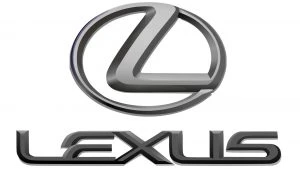
First place goes to Lexus who claims the top spot as the most dependable brand of car you can buy. Lexus cars suffer from very few faults. The Lexus NX SUV is the highest-rated hybrid you can buy.

Second place brand is Dacia, which is considered to be a budget brand. Here is a prime example of reliability and low cost going hand in hand. Dacia’s star performer is the previous generation Dacia Sandero.
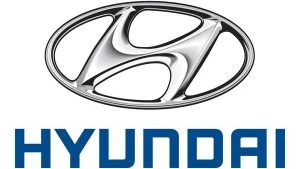
Hyundai takes the bronze, where the previous generation Hyundai i10, the larger i20, and the current Hyundai i30 being standouts. It was revealed that the problem areas included the brakes and gearbox, however the brand’s 5-year unlimited km warranty meant that most problems were fixed for free.
Suzuki
Suzuki takes fourth place for brand reliability; an excellent result. The little Suzuki Swift is the third most reliable car – a star performer for Suzuki.
Mini
Mini cars are generally pretty reliable cars. Mini’s Countryman scored well in the small SUV class. Mini’s little Hatchback is the sixth most reliable small car overall – a great result.
Toyota
Toyota has long been an impressively reliable brand, though it’s slipped slightly from third place last year.
Mitsubishi
Mitsubishi ranked 7th, their place unchanged from last year. The Mitsubishi Eclipse Cross is the most reliable family SUV on the market, boasting a 100% reliability score!
Mazda
Eighth place goes to the Mazda brand. Mazda highlights include the CX-3 (a very reliable small SUV), the CX-5 (petrol version), and the MX-5 sports car.
Kia
Star performers for Kia are the XCeed and Ceed family cars, which are among the most reliable in their class, while the Kia Optima is the second-most reliable executive car. Kia’s affordable E-Niro is the third most reliable EV.
MG
MG is the brand that takes out 10th spot. The classy MG ZS EV is the second-most reliable EV in the survey.
11) Citroen – Citroen’s C3 Aircross is the third most reliable small SUV.
12) Skoda – Skoda’s Superb is the most reliable executive car.
13) BMW – BMW’s previous model 1 Series is the most reliable family car. The BMW 5 Series is the most reliable luxury car. The BMW 3 Series also ranks 3rd in the executive class. Current BMW Hybrids are not quite so reliable.
14) Honda – The previous model Jazz was fifth in its class, while the HR-V is the most reliable small SUV.
15) Tesla – the Tesla Model 3 ranked 5th in the EV class.
16) Renault
17) Seat
18) Audi – Audi’s TT is the number one sports car for reliability.
19) Volvo
20) Volkswagen
Jaguar, Mercedes Benz, Peugeot, Vauxhall, Porsche, Alfa Romeo, Ford, Nissan, Land Rover, and then Fiat takes out 30th spot.
Of the last 10:
Porshce’s Macan took 1st place for the luxury SUV class.
Nissan’s LEAF is 1st for the most reliable EV.
Honda’s Latest
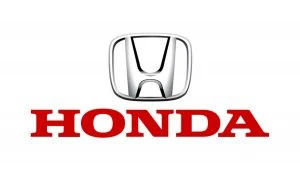
As with many other automotive manufacturers, Honda is on the hunt for having its fleet become fully electrified. Honda’s vision is to have 100% of its new vehicles with zero emissions by 2040. There are some neat EV models in the pipeline, but also some vehicles that help transition the gap from petrol to hybrid to 100% electric. Honda’s 2022 Civic models are set to be enjoyable.
Honda recently announced that their Prologue SUV, which will be Honda’s first new EV sold in big volume, will be a battery-electric vehicle (BEV) that will go on sale in 2024. It is likely that the Prologue SUV will be an American-only seller first, so how that fits in with Australia remains to be seen. As EV infrastructure expands, and customer interest grows nationwide and globally, the company will expand sales and marketing efforts accordingly. Following the launch of the Honda Prologue, the company will create additional EVs based on the new e-Architecture that is currently being developed and customer demand.
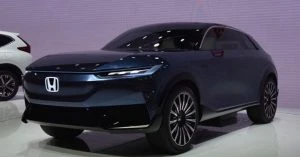
Honda Prologue SUV
Honda has a long history of being a leader in creating hybrid and electrified vehicles. Honda’s Insight still is a very good example of how a hybrid should perform, and it remains a strong seller with people who are looking for low emissions and frugality in fuel usage. As Honda prepares for the launch of the Honda Prologue for America, the company will introduce hybrid-electric systems to other core models to continue to reduce CO2 emissions while helping create a bridge for customers to move from fossil fuels to hybrid to EVs.
Honda’s management have stated that they are aware that customers who have a good experience with a hybrid vehicle are more likely to buy an electric vehicle in the future. We can see that their hybrid sales have increased over the last few years. Led by models such as the CR-V Hybrid and the Accord Hybrid, Honda just recorded its best-ever first-half year of electrified vehicle sales. The Insight has also sold well.
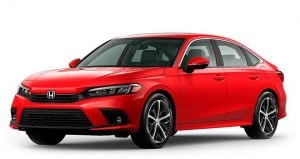
2022 Honda Civic Sedan
Now what about now? Let’s take a look at the all-new Honda Civic Hatchback! In 2022, Honda will be selling the latest Civic in Australia. The car is aimed predominantly at young buyers who are captured by its fastback design and sporty driving character. The new Civic will offer a slick-shifting 6-speed manual transmission as well as an automatic CVT option to go with the 2.0-liter normally aspirated motor or the 1.5-liter turbo engine. High-performance Si and Type R models are to be available, and they are cars I’ll be keeping my eyes out for.
The largest back seat to ever be inside a Civic Hatchback comes with 2022 models, and the cars also features new standards of safety technologies. All 2022 Honda Civic Hatchbacks include Honda’s new next-gen driver and front passenger airbags and an expanded Honda Sensing suite of driver-assistive and safety technology that adds Traffic Jam Assist and a smoother, more natural feeling to functions like Adaptive Cruise Control (ACC) and the Lane Keeping Assist System (LKAS). It will also include Collision Mitigation Braking System (CMBS) with Pedestrian Detection, Forward Collision Warning, and Road Departure Mitigation (RDM).
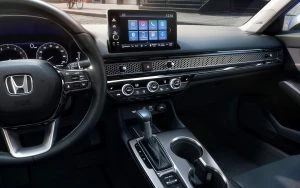
2022 Honda Civic Dash
2022 Honda Civic EX-L models will boast all the luxury features, so big color touchscreen with Apple CarPlay and Android Auto integration, push-button start, partial digital instrumentation, blind-spot information (BSI), leather upholstery, an 8-way power driver’s seat, heated front seats, heated outside mirrors, a one-touch power sliding moonroof, dual-zone automatic climate control and LED headlights are the go.
Sportier Civics will have racy looks thanks to things like a short shifting 6-speed manual transmission (or CVT), Berlina Black 18-inch wheels, low-profile 235/40R-18 tyres, black exterior accents, an 8-speaker audio system, sport-specific upholstery, a leather-wrapped shifter and steering wheel, paddle shifters (CVT only) and sport pedals.
As the automaker prepares for the launch of the Prologue SUV in America, expect to see more hybrid variants of current core models to ease the transition to full electrification.
Ford Movements
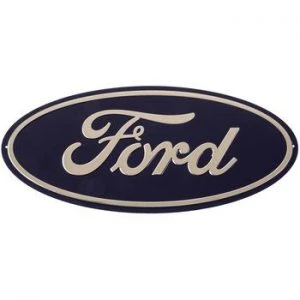
Hot off the Press News has Ford investing big money in EV production. All up, Ford and a South Korean supplier will spend $11.4 billion US on Ford’s EV production and expansion. Ford hopes this spend will enable them to produce more than one million EVs per year in the second half of this decade. The buzz words used in new and future cars include the term electric vehicles or EVs. Established automakers like Ford are racing to try and close the gap on Tesla’s EV lead. As you may be aware, Tesla produces a range of EVs, and Tesla are currently on the way to selling more than 800,000 electric cars this year. Tesla is currently the most valuable automaker in the world, with a market capitalization of nearly $800 billion US. Ford’s market value is $56 billion US.

Ford F-150 Lightening
Ford’s big spend will be its 2nd biggest spend in its history. Under the climate change banner and the Biden government, this latest US multibillion-dollar move to quickly transfer production plants to EV production is seen as a fast track phasing out of gasoline-powered cars and trucks as part of the global push to combat climate change. I won’t debate the science here.
Ford is to build 2 battery plants in Kentucky and 1 in Tennessee under the joint venture with its main battery cell supplier, SK Innovation of South Korea. In addition, Ford will build an assembly plant at the Tennessee location to churn out EV trucks. Ford will invest $7 billion and SK Innovation $4.4 billion, the companies have said. Ford expects electric vehicle models to make up 40% of their vehicle production by 2030. That’s only a little over 8 years away!
Ford’s new truck plant and battery factory in Tennessee is likely to be the place that will produce a new battery-powered Ford F-Series pickup truck, this following the previously announced F-150 Lightning pick up truck. I have to say that the F-150 Lightening is an impressive beast! Ford has said a mix of both the public and businesses had already placed 150,000 reservations for purchasing the F-150 Lightning.
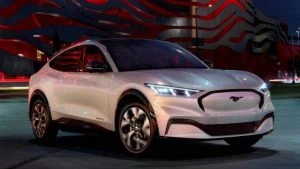
Ford Mustang Mach-E
Also this year, Ford began selling the Mustang Mach-E, which has taken a sizable market share from Tesla. Ford also plans to add an EV delivery van into the mix by the end of the year. Then, in early 2022, the electric F-150 Lightning will roll out of their showrooms and silently onto the tarmac.
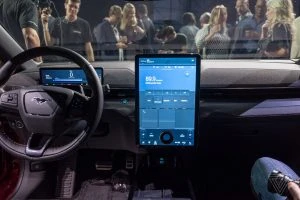
Ford Mustang Mach-E
Mr. Jim Farley, Ford Motor’s president and CEO, has recently said that making electrical vehicles affordable should be among the top priorities for automakers, so that the average vehicle-buyer can purchase one. This is good news, as a new EV is well out of most people’s budget.
He also made a couple of rather poignant comments: one on a key issue on questioning how EV production will impact labour/jobs (a subject rather close to home with our relatively recent Ford and Holden closures), and the other on materials. So, apparently, it costs 30% less to manufacture the Ford electrical vehicles. This will definitely affect production rates and employment long term. Then there is also the issue of battery supply and the rare minerals (i.e., lithium, cobalt) needed to power them, said Farley. Mr Farley stated, “We have to bring battery production here, but the supply chain has to go all the way to the mines. That’s where the real cost is, and people in the U.S. don’t want mining in their neighbourhoods. So, are we going to import lithium and pull cobalt from nation-states that have child labour and all sorts of corruption, or are we going to get serious about mining? … We have to solve these things and we don’t have much time.”
Here in Australia, we haven’t jumped on the EV wagon just yet, and if we are going too, then there is so much infrastructure that will be needed to be implemented before owning an EV becomes a viable option for people like me. Even the thought of the costs involved in getting the right infrastructure is eyewatering, and, like most impatient home renovators and idealistic politicians, the job must be done yesterday! The hard working folk pay for it, of course!
There seems little patience on offer by many governments and climate change activists for making the move to EVs (and other new transportation technology like an EV repower on your existing car) a more balanced and delicate affair. For now, owning an EV is very much for the elite, so Farley is on the right track when he says that the cost of EV ownership must be addressed very quickly.
Ford still has many plants throughout the U.S. However, like other big automotive manufacturers, Ford also has locations right around the world. Ford has many production plants scattered about the globe, and these include assembly plants, engine plants, forging plants, stamping plants and transmission plants. Here, in Australia, Ford still has special engine production and stamping plants.
On a more local note, Ford has a new feature called ‘FordPass’ offered on all their new models sold in Australia. FordPass has a few systems worthy of a mention that include:
Remote Start+, where minutes before leaving, you can start your connected vehicle’s engine from your mobile device in order to heat or cool the cabin using the last known climate control setting.
Vehicle Status, where you can check key variables such as fuel level and your odometer on the FordPass App to help plan your journey.
Remote Lock/Unlock, where, conveniently, you can use your mobile device to make sure the car doors are locked or unlocked without being anywhere near your vehicle. If only it could do that for my house front door!
Vehicle Locator, where you can check your vehicle’s exact location in the FordPass App, which is particularly useful if you share your vehicle with one or more members of your household or if you have forgotten where you parked it. However, if you’ve forgotten where you’ve parked it, then maybe you better get breath tested!
Vehicle Health Alerts, where the FordPass App sends Vehicle Health Alerts directly to your mobile device, pre-empting service needs and general maintenance such as low washer fluid.
Live Traffic, where this feature enhances your SYNC 3 Navigation system by delivering up-to-date traffic updates. This technology allows you to adjust your recommended route based on the traffic conditions, helping you to arrive more relaxed and on time.
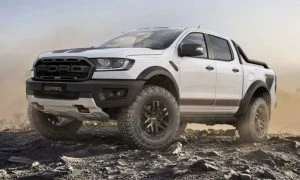
Ford Ranger Special Ediiton
In this second half of 2021, Ford Australia offer a nice broad range of vehicles that include the Puma, Escape and Everest SUVs; the Ford Focus car; the Ford Ranger Ute; the Transit Commercial range that has custom vehicles, vans, buses and cab-chassis models; the Ford Performance range that includes the Fiesta and Focus ST, the Focus ST-3, the Ranger Raptor, the Mustang and Mustang Mach-1; and the Special Edition Rangers and Everests.
It is good to see Ford keeping pace with any EV and hybrid automotive technology and movements; though at what societal and environmental cost? New Ford vehicles are good, and Ford offers a very complete package for all new vehicles in the Ford range. Once you’ve driven a Ford, its not so easy to change out of the brand come new car buying territory.
BMW Brilliance

BMW has always been a favourite standout brand of mine, and BMW is forging new models and technology even as we speak. It has been a bit of a gruelling year-or-two with the covid shenanigans, and car manufactures are only one small segment of the global economic pie to have taken a sizable hit. The shortage of semiconductors has been, and still is, a problem because cars rely on these items for controlling anything from your electric windows to all the fancy driving assistance aids. However, the winds are changing, and the rebound is occurring. Luxury car marques like BMW seem to be doing very well, and even with the electronic chip shortages being a bit of an issue it seems that BMW will get through this period in fairly good shape. There is always a talking point re this special car marque; sometimes the designs might look great to some and not so flash for others, but there is always a gem being turned out from this great team of motoring designers and manufacturers. BMW cars are more often than not great to drive, good looking, practical and advanced cars.
In this covid recovery period, various chief financial officers recently mentioned that, for now, luxury marques like BMW would consciously undersupply demand levels, which seems a prudent, sensible path to take, as BMW new car prices are holding up very well – quite bullish in fact. The increased pricing power has already trickled down to the bottom lines for BMW and Daimler. Mercedes achieved a 12.2% return on sales in the last reported quarter, which was up from 8.4% in the same period in 2018 (2018 being of a period not affected by the pandemic or diesel emissions litigation costs). BMW achieved a 16% return on sales, which was up from 8.6% in 2018. BMW also reported a $5.7 billion net profit in the second quarter of this year, suggesting global auto markets are continuing to recover from the pandemic — particularly when it comes to luxury cars like BMW and Mercedes.
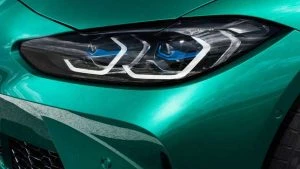
BMW M4 Minty Green
This is great news for BMW and car lovers in general, but what’s new in BMW’s box of tricks? A very cool thing that BMW revealed at the recent Munich Motorshow (early September 2021) was to be found in the BMW M4 corner, where this manic machine, with its impetuous acceleration, showed a jaw-dropping minty green sheen to its beautiful, sexy exterior. The M4 Competition wore a Mint Green paint job and sat upon gorgeous bronze 20-inch rims. Both of these options are available as part of the brand’s expanded BMW Individual customization line, which you can find on BMW’s online configurator, where more than 130 other paint options and eight different wheel options are available. This latest BMW M4 Competition also had a new fibre front splitter, a restyled rear bumper, a rear wing, and some unique side skirts that were all made with carbon fibre. Carbon fibre interior seating surfaces and trim pieces are also part of the online configurator. So, try before you buy!
The Munich motor show also allowed the public to preview a hydrogen-electric BMW X5 that is due to enter very-limited production in 2022. This is an exciting moment because the vehicle was first previewed in 2019 as the i Hydrogen Next concept. It’s currently in the prototype stage, and early this month it was confirmed with the go ahead, going by the name of BMW iX5 Hydrogen.

A hydrogen-electric vehicle is like a battery-electric vehicle, but instead of drawing power from electricity out of the charged battery the hydrogen-electric vehicle relies on a hydrogen fuel-cell stack to produce electricity power. BMW’s iX5 Hydrogen has the hydrogen fuel-cell positioned up front where it draws hydrogen from 2 tanks, one in the X5’s transmission tunnel and another under the rear seats. The tanks are made from carbon-fibre-reinforced-plastic and can hold about 5.9 kg of hydrogen at more than 10,000 psi. Tank filling takes only a few minutes. The hydrogen fuel-cell combines hydrogen with oxygen from the air to create electricity. This process only has water (H2O) as a by-product – Wow! The electricity primarily powers a single motor at the rear axle but is also used to charge a small battery that steps in from time-to-time to deliver extra grunt to the motor during high-load situations.
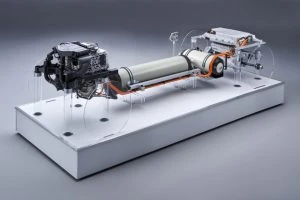
BMW iX5 Hydrogen Platform
The BMW iX5 Hydrogen will have a total system power output of 275 kW. The hydrogen fuel cell, on its own, generates about 125 kW. The vehicle’s aerodynamically shaped 22-inch wheels are wrapped in a new Pirelli tyre that is made from natural rubber and a wood-based synthetic fibre known as rayon. These two materials replace much of the petroleum-based synthetic rubbers used in modern tyres.
The extensive field testing has already started in earnest within Europe. Particular focus points have had the engineers examining how effectively the CO2-free drivetrain works in real-life conditions. Also, they are measuring metrics which include reliability, safety, and efficiency during everyday conditions to ensure that the new model is perfect for mass production. Hydrogen fuel cell technology has the potential to supplement internal combustion engines, plug-in hybrid systems, and battery-electric vehicles. The BMW iX5 Hydrogen has hydrogen tanks that can be filled quickly in only 3–4 minutes.
BMW states that the small batch of iX5 Hydrogen models that are destined to be built in 2022 will only be used for demonstration and testing purposes. BMW doesn’t expect to have any hydrogen-electric vehicles at dealerships until 2025 at the earliest and depending on the direction that the automotive markets take.
Newest off the showroom floor is the all-new BMW iX3 with its refreshed exterior design. The new BMW iX3 has a sexier appearance and introduces the M Sport Package as standard. BMW has achieved an impressive CO2 emission assessment for this next-generation iX3, and the vehicle boasts an exceptionally efficient drive system. Extensive use of secondary raw materials in the manufacture of aluminium castings and thermoplastics combines with the new iX3 boasting an absence of rare earth materials and the use of more green electricity in its production.
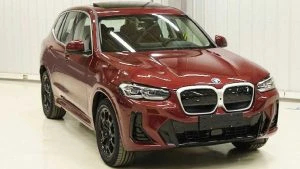
BMW iX3 2022
The BMW iX3 has a kidney grille that is larger still, and it has a single-piece frame that comes in Pearl-effect Chrome with blue accents to match with the BMW i styling cues. Its headlights have been made slimmer. It also boasts 19-inch black aerodynamic wheels, an automatic tailgate, adaptive suspension, a heated steering wheel, a panoramic sunroof, and Smartphone integration with Apple CarPlay and Android Auto.
BMW is a bit of a landmark in the automotive world, a benchmark, the perfect blend of performance, luxury and practicality. In the future, BMW wants to be ready to supply customers with their powertrain of choice, whether it be gasoline, diesel, battery or hydrogen. In the case of hydrogen, BMW sees it as an opportunity for customers that favour long-distance driving or who happen to live in regions without adequate battery recharging infrastructure.
I have so many favourite BMWs and other cars, including the 4.0-litre Falcons, which have rolled our roads over the last few decades of motoring, but let’s not be nincompoops and let’s embrace new ways of automotive power; let’s embrace the new BMW i technology.